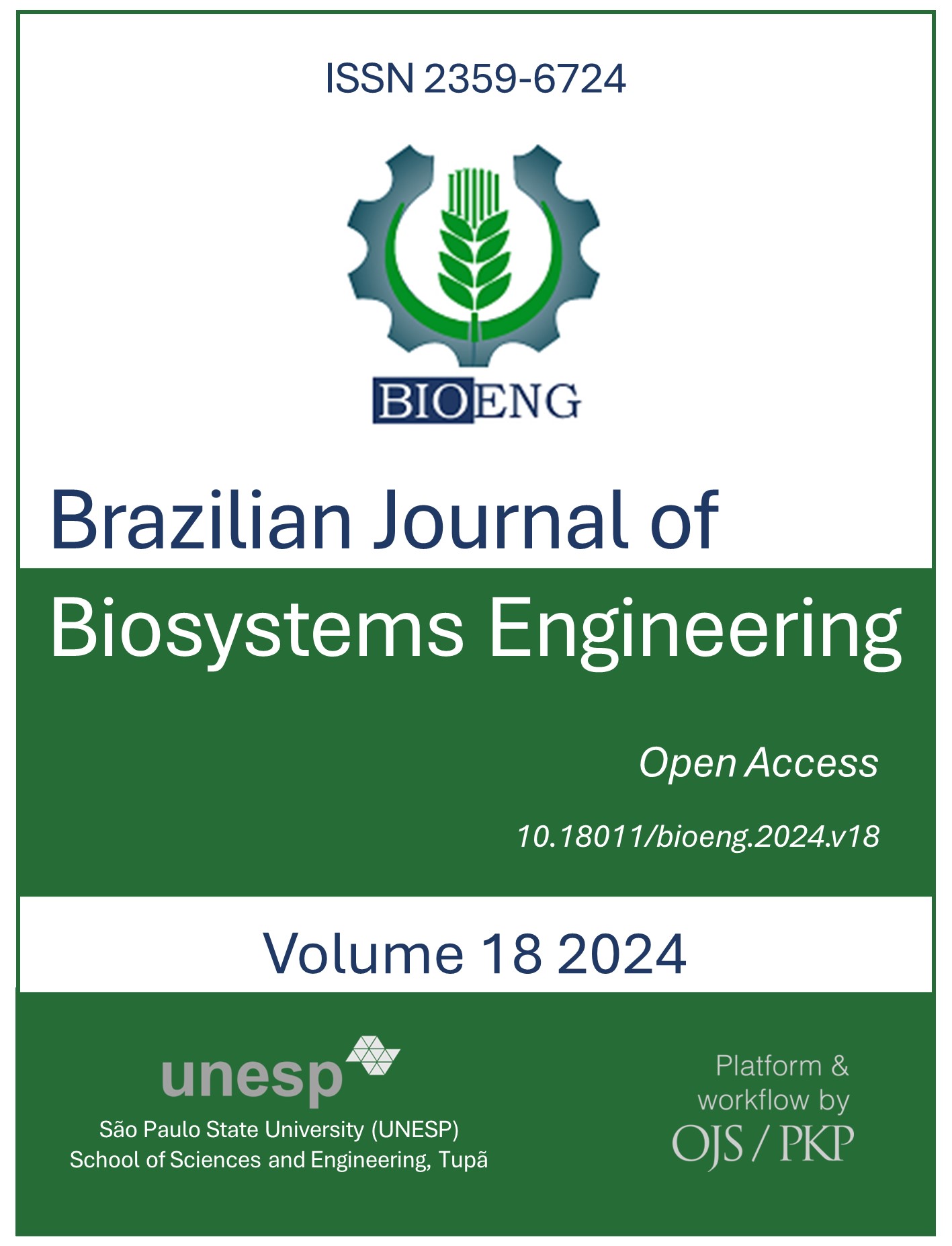Application of the antimicrobial peptide ctx(ile21)-ha in peanut seeds to evaluate their germinative parameters
DOI:
https://doi.org/10.18011/bioeng.2024.v18.1235Keywords:
Germination, Production, Microorganisms, Peptide, FungicideAbstract
Antimicrobial peptides have gained prominence in scientific research due to their biological potential and antifungal capacity. These peptides are small proteins intrinsic to the system of many living organisms and have activity against microorganisms, bacteria, fungi, viruses and helminths. Therefore, fungi of the genus Aspergillus spp are very common in nature, and affect the production of peanuts, almonds, chestnuts and others. Thus, the present work sought a strategy to reduce or mitigate the activity of this fungus in peanut seeds during germination by applying three different dosages (3.6, 4.8 and 7.2 mg/mL) of the antimicrobial peptide Ctx(Ile21)-Ha in ultrapure water, and had as objective to evaluate its effects on germination parameters in comparison with the use of the commercial fungicide (Mayran), widely used in peanut crops in the Tupã - São Paulo. The most promising results occurred with dosages of 3.6 mg/mL and 7.2 mg/mL of the peptide, and the Mayran fungicide also showed high efficiency rates for peanut germination, but it presents high toxicity for the producer who handles the fungicide.
Downloads
References
Brasil. Ministério da Agricultura, do Abastecimento e da Reforma Agrária. Secretaria Nacional de Defesa Agropecuária. (1992). Regras para análise de sementes. Brasília, DF.
Embrapa. (2023). Brasil em 50 alimentos. Recuperado em 19 de agosto de 2024, de https://www.embrapa.br/busca-de-publicacoes/-/publicacao/1153294/brasil-em-50-alimentos
MAPA. (2024). Cultura do amendoim vive ‘evolução gigantesca’ com sementes certificadas. Recuperado em 17 de agosto de 2024, de https://www.gov.br/agricultura/pt-br/assuntos/noticias/cultura-do-amendoim-vive-2018evolucao-gigantesca2019-com-sementes-certificadas
Merrifield, R. B. (1963). Solid phase peptide synthesis. I. The synthesis of a tetrapeptide. Journal of the American Chemical Society, 85(14), 2149–2154. DOI: https://doi.org/10.1021/ja00897a025
Okada, M. H., et al. (2021). Acquisition of the physiological quality of peanut (Arachis hypogaea L.) seeds during maturation under the influence of the maternal environment. PLoS One, 16(5), 1–15. https://doi.org/10.1371/journal.pone.0250293 DOI: https://doi.org/10.1371/journal.pone.0250293
Roque-Borda, C. A., et al. (2021). Alginate-based microparticles coated with HPMCP/AS cellulose-derivatives enable the Ctx(Ile21)-Ha antimicrobial peptide application as a feed additive. International Journal of Biological Macromolecules, 183, 1236–1247. https://doi.org/10.1016/j.ijbiomac.2021.05.011 DOI: https://doi.org/10.1016/j.ijbiomac.2021.05.011
Stalker, T., & Wilson, R. F. (2016). Peanuts: Genetics, processing and utilization (1st ed.). Academic Press and AOCS Press, Elsevier.
USDA. (2024). Peanut 2023: World production. Recuperado em 18 de agosto de 2024, de https://ipad.fas.usda.gov/cropexplorer/cropview/commodityView.aspx?startrow=11&cropid=2221000&sel_year=2023&rankby=Production
Von Muhlen, C., & Lanças, F. M. (2004). Cromatografia unificada. Química Nova, 27(5), 747–753. DOI: https://doi.org/10.1590/S0100-40422004000500014
Downloads
Published
How to Cite
Issue
Section
License
Copyright (c) 2024 Revista Brasileira de Engenharia de Biossistemas

This work is licensed under a Creative Commons Attribution 4.0 International License.
Authors who publish in this journal agree to the following terms:
a) Authors retain the copyright and grant the journal the right of first publication, with the work simultaneously licensed under the Creative Commons Attribution License that allows the sharing of the work with recognition of authorship and initial publication in this journal.
b) Authors are authorized to assume additional contracts separately, for non-exclusive distribution of the version of the work published in this journal (eg, publish in an institutional repository or as a book chapter), with recognition of authorship and initial publication in this journal.








